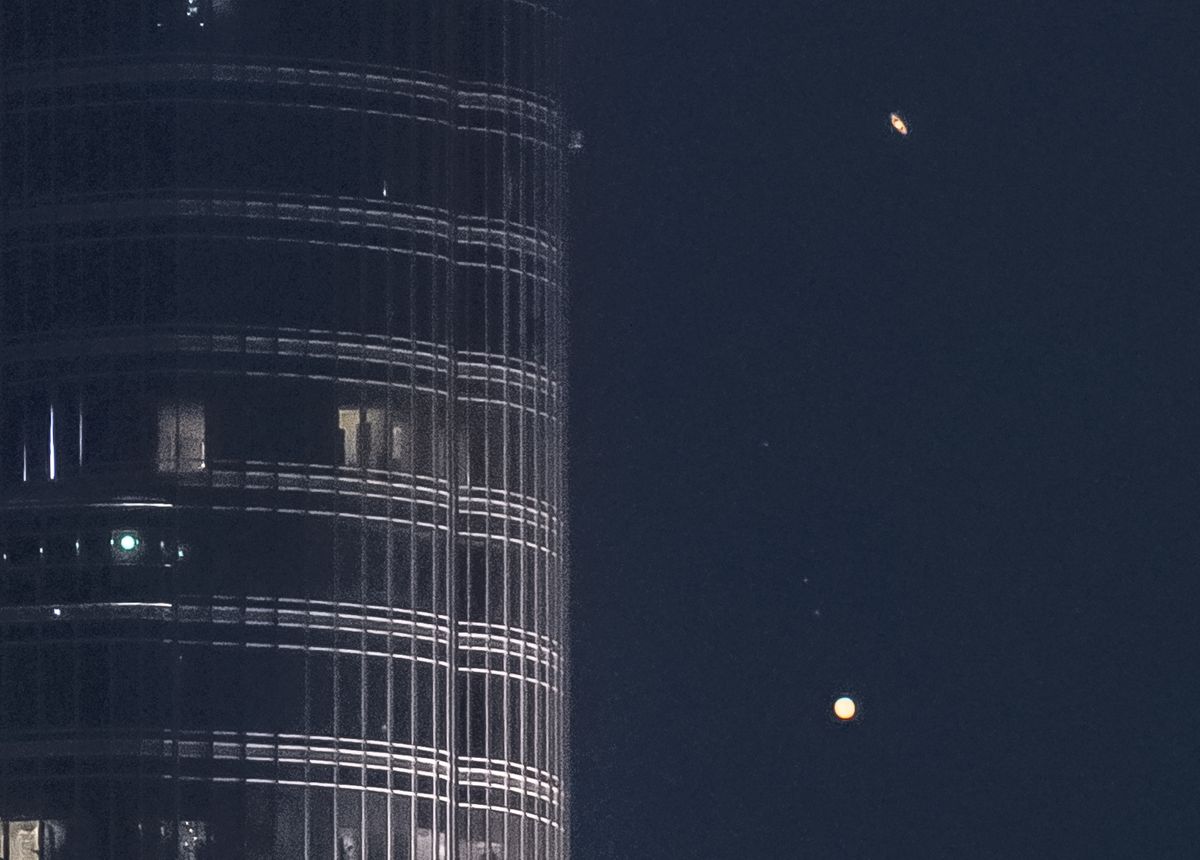
On Monday (December 21), Jupiter and Saturn appeared closer to each other in the night sky than in 800 years. To the naked eye, this “Great Conjunction” looked like a single, enormous celestial body shining above the Earth. But for telescopes – and consumer cameras equipped with telescopic lenses – the planets showed their individual faces in stunning detail as they walked through the sky.
Florian Kriechbaumer, a photographer in the United Arab Emirates, captured the celestial spectacle from one of the most sky-scraping locations on Earth: near Burj Khalifa, the world’s tallest building. In a large parking lot opposite the skyscraper (which is 2,720 feet or 830 meters high), Kriechbaumer filmed the conjunction for 45 minutes, capturing the moment when the two planets are closest to each other (from his vantage point).
You can see his results in the time-lapse video below, which summarizes the entire shoot in about 20 seconds.
Related: The 12 strangest objects in the universe
“When I recorded this one, there were a few clouds, so I was worried if I could even capture it,” Kriechbaumer told Live Science in an email. “Fortunately, they opened at the right time. It’s such an incredible time to see the rings of Saturn and Jupiter appear side by side with some of its moons in your viewfinder.”
“Everyone should look at the planets and the night sky once in their lifetime,” he added.
Amazing as it may seem from Earth, Saturn and Jupiter were not particularly close to each other during the conjunction, Live Science previously reported. Jupiter is currently about 550 million miles (890 million kilometers) from Earth, or about 5.9 times the distance from Earth to the Sun, while Saturn is about 1 billion miles (1.6 billion km) from Earth , or about 10.8 times the distance from the Earth to the sun. The planets were still 450 million miles (724 million km) apart from each other. They seem very close to us simply because Jupiter’s orbit brought it into the line between Earth and Saturn.
Originally published on Live Science.